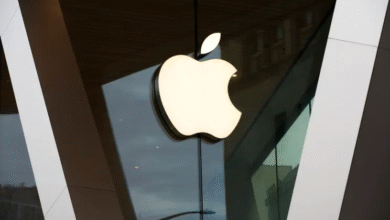Maximizing the Potential of Your Smartphone: Tips and Tricks for Science Enthusiasts

With the advancement in technology, potential of your smartphone have become an essential tool for our daily activities. But did you know that your smartphone can be used for scientific activities as well? Whether you’re a student, researcher, or science enthusiast, your smartphone can help you in various ways. In this article, we will discuss some tips and tricks to maximize the potential of your smartphone for scientific activities.
Essential Scientific Apps
With the abundance of apps available on app stores, it can be difficult to find apps that are essential for scientific activities. Here are some scientific apps that every science enthusiast should have on their smartphone:
1. Wolfram Alpha
Wolfram Alpha is an intelligent computational search engine that can solve complex scientific problems, including mathematical equations, chemical reactions, and astronomical calculations.
2. Google Scholar
Google Scholar is a search engine that provides access to scholarly literature across various disciplines. You can use Google Scholar to find articles, books, and other research materials.
3. Science Journal
Science Journal is an app developed by Google that allows you to use your smartphone as a laboratory instrument. With Science Journal, you can measure and record data from sensors on your smartphone, including light, sound, and motion.
4. Mendeley
Mendeley is a reference manager and academic social network that allows you to organize and share research papers and collaborate with other researchers.
Using Your Smartphone as a Laboratory Instrument

Your smartphone can be used as a laboratory instrument with the help of some accessories. Here are some examples:
1. Microscope Lens
You can attach a microscope lens to your smartphone camera to magnify and capture microscopic images. This can be useful for examining small organisms or materials.
2. pH Meter
You can use a pH meter attachment to measure the pH level of solutions. This can be helpful for conducting experiments in chemistry.
3. Spectrometer
You can attach a spectrometer to your smartphone camera to analyze the spectrum of light emitted by different sources. This can be useful for identifying the chemical composition of materials.
Conducting Experiments with Your Smartphone
Your smartphone can be used to conduct various experiments. Here are some examples:
1. Sound Wave Analysis
You can use your smartphone’s microphone and an app like Audacity to analyze sound waves. This can be useful for studying the properties of sound.
2. Plant Identification
You can use an app like PlantNet to identify plants by taking a photo of their leaves or flowers. This can be helpful for studying plant species.
3. Weather Station
You can use your smartphone to collect weather data, including temperature, humidity, and air pressure. This can be useful for studying weather patterns.
Documenting and Sharing Your Scientific Work
Your smartphone can be used to document and share your scientific work. Here are some examples:
1. Note-taking
You can use apps like Evernote or Google Keep to take notes during experiments or research. These apps allow you to organize your notes and access them from anywhere.
2. Video Recording
You can use your smartphone’s camera to record videos of your experiments or demonstrations. This can be helpful for documenting your work and sharing it with others.
. Social Media
You can use social media platforms like Twitter or Instagram to share your scientific work with a wider audience. This can help you to connect with other science enthusiasts, share your findings, and engage in scientific discussions.
Maximizing Your Smartphone’s Battery Life
With all these scientific activities, it’s important to ensure that your smartphone’s battery life doesn’t drain quickly. Here are some tips to help maximize your smartphone’s battery life:
1. Adjust Screen Brightness
Reducing the brightness of your smartphone’s screen can help save battery life. You can also set your phone to automatically adjust the brightness based on the ambient light.
2. Turn Off Location Services
Location services can use a lot of battery, especially if they are constantly running. Turning off location services when you don’t need them can help save battery life.
3. Close Unused Apps
Unused apps running in the background can drain your smartphone’s battery. Make sure to close apps that you are not using.
Read More:Innovative Science on the Go: The Benefits of Smartphone-Based Research in 2023
Conclusion
Smartphones have become an essential tool for science enthusiasts, allowing them to conduct experiments, take notes, and share their findings. With the right apps and accessories, your smartphone can be transformed into a laboratory instrument. It’s important to ensure that your smartphone’s battery life is maximized to make the most of your scientific activities.
FAQs
- Can I use my smartphone to measure the temperature? Yes, you can use your smartphone to measure the temperature by using an external temperature sensor attachment.
- Are there any apps to help me with scientific research? Yes, there are many apps available on app stores that can help you with scientific research, including Google Scholar and Mendeley.
- Can I use my smartphone to measure the pH level of a solution? Yes, you can use a pH meter attachment to measure the pH level of a solution with your smartphone.
- Can I use my smartphone to identify constellations? Yes, you can use an app like SkyView to identify constellations and stars by pointing your smartphone’s camera towards the sky.
- Can I use my smartphone to measure the speed of light? No, your smartphone cannot be used to directly measure the speed of light. However, you can use apps like LightSpeed to estimate the speed of light by measuring the time it takes for light to travel a certain distance.












One Comment